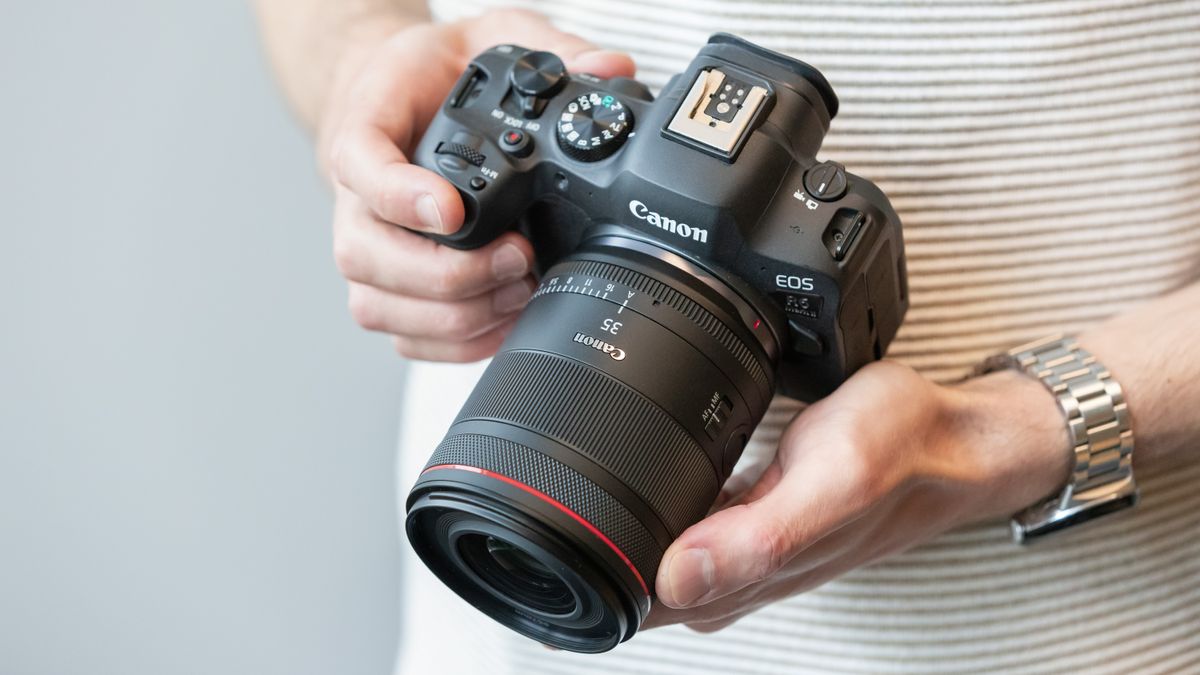I’ve written quite a few times over the past couple of years about the lenses I’d most like to see for the Canon RF mount, and consistently the one lens that features right up the top of that list is an update to Canon’s immensely popular EF 35 mm f/1.4 USM II lens.
This lens is the staple prime for so many professional and amateur photographers alike as it’s one of, if not the, most versatile prime lens for the widest variety of photographic work. Perfect for landscapes, weddings, fashion, street photography, documentaries and so much more, like many photographers, a 35mm is the lens that gets left on my camera at all times so I am ready for nearly any moment.
The EF 35mm f/1.4L II USM was released in 2015, three years before we caught a glimpse of Canon EOS R and its RF mount that would usher in a new era. Since then Canon has steadily released 46 RF mount lenses although, despite popular primes like the 50mm f/1.2L getting an RF upgrade, there was no sequel to the EF 35mm.
But after what seems like an age of patiently waiting, Canon has finally answered the photography world’s calls with the Canon RF 35mm f/1.4 L VCM. Although for this new version to make its mark, there are a few tweaks from its EF brother, with the RF 35mm f/1.4L becoming just the second lens in Canon’s hybrid lineup after the RF 24-105mm f/2.8L IS USM Z.
But before you rush to list your old lens for sale, read on to find out if the new lens is a must-have, or if in fact, you can’t improve on a classic.
Canon RF 35mm f/1.4L VCM: Specifications
| Mount | Canon RF |
| Aperture range | f/1.4 – f/16 |
| Autofocus | Nano USM + VCM |
| Image stabilization | No OIS, up to 7-stops with IBIS |
| Magnification | x 0.18 |
| Close focus distance | 0.28 m |
| Lens construction | 14 elements / 11 groups with 2 UD + 2 Aspheric elements |
| Coatings | ASC coating and Super Spectra |
| Aperture blades | 11 |
| Filter | 67mm |
| Size (DxL) | 76.5 x 99.3mm |
| Weight | 555g |
Canon RF 35mm f/1.4L VCM: Price
In a surprising move, as inflation rages and prices rise across the industry, Canon has launched the RF 35mm f/1.4 at a lower price than the EF version’s $1,799 launch price, with the RF 35mm f/1.4L costing $1,499 / £1,819.99 / AU$2,699.
Despite the lower launch price, the Canon RF 35mm f/1.4L lens is still one of the most expensive 35mm lenses on the market, with Sony’s FE 35mm f/1.4 GM costing a hundred dollars less ($1,399) in the US or AU$1,760 in Australia, and the Sigma 35mm f/1.4 DG DN | Art coming in at less than half the price ($749 / AU$1,299).
Although none of this means much if you are a Canon shooter, as your choices of 35mm full-frame primes (if you want autofocus) are limited to the one RF 35mm f/1.8 IS Macro STM option, and at only $499 / AU$839, there is a substantial price gulf between the two.
Canon RF 35mm f/1.4L VCM: Design & Handling
When it comes to design, the RF 35mm f/1.4L follows the same look as recent L-series RF lenses, which are themselves more of a simple refinement of their EF counterparts.
The new lens is slightly smaller but much lighter than the older model. That weight saving doesn’t even take into account using the additional EF-RF mount adapter that you would need if using the EF version of the lens on an EOS R camera.
I used the two lenses side by side on a Canon EOS R5 and the weight difference between them was stark – and the weight saving alone might well be reason enough to upgrade.
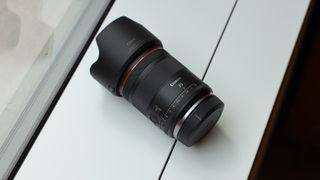
Despite the decrease in size and weight, Canon has managed to add a few new tricks to the RF version. These include a custom function button on the left of the lens as well as the now-standard RF lens control ring, which can each be set for a variety of functions in the camera menu.
The lens also features a brand new VCM autofocus motor – the first time a voice coil motor (VCM) has been employed in a Canon lens. This works alongside the usual Nano USM motor in Canon lenses and should make the lens quieter, faster, and more accurate in focusing.
The RF 35mm is also just the second Canon lens, after the RF 24-105mm f/2.8L IS USM Z, to feature an iris (aperture) ring – though you might have clocked that there is no Z in this lens name, which refers to the power zoom adapter that is available for the 24-105mm.
The aperture ring is clickless and features a switch to lock the dial in automatic mode; while in automatic the aperture can still be controlled using the front wheel on the camera as usual, if that is your preferred method.

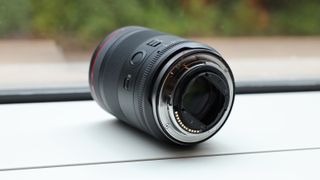
Frustratingly the aperture dial still only works for video and cannot be used for stills photography. I am definitely not an engineer, but really don’t understand why this is not possible and seems like something that could be pushed in a firmware update to existing cameras.
Might this be something enabled in new cameras in the future? Canon has not announced a new camera since the release of the RF 24-105mm Z, so it’ll be interesting to see if the Canon EOS R1 (which seems likely to be the next Canon release) supports aperture rings for stills photography when it’s released. However, it would be a huge disappointment to not see any backward-compatibility for those who have recently bought new Canon cameras.
The lens also features the usual switches for flicking between full-time manual and autofocus modes. The lens comes with a usual petal-shaped hood and takes 67mm filters on the front, as well as having a filter holder on the rear of the lens for gelatin filters – which also could well become a standard feature of L-series RF lenses going forward.
Canon RF 35mm f/1.4L VCM: Performance
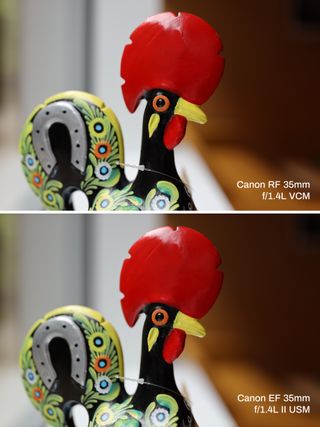
I have only managed to spend the briefest amount of time testing the lens and not in the most optimal conditions, so to give a full evaluation of the lens’s performance stay tuned for the full review soon!
However, from initial testing of the EF mount version next to the new RF mount version quality seems to be on par between the two. This might sound like a bad thing for a new lens released almost nine years after the previous one, but the EF mount version is so optically good that keeping up with it on top of all the weight savings and additional features is a great feat.

Images were shot using a Canon EOS R5 and Canon EOS R. On both cameras, the lens produced incredibly tack-sharp detail, and the wide aperture produced some lovely fall-off of focus and background blur. The EOS R5 also has the benefit of in-body image stabilization, enabling me to push the shutter speed even lower, which really helped in the dim environment I was testing in.
Center sharpness was outstanding and, from my early tests, it looks like Canon has made improvements in the sharpness across the frame, with edges looking a little better than in the same shots using the EF 35mm.
As we’ve come to expect by now from Canon lenses the autofocus is next level, but the Canon RF 35mm manages to step it up even further with its new VCM autofocus mechanism – the first time this has featured in a Canon lens. The RF 35mm is practically silent to focus and is lightning-quick. I am really excited to try this lens out of fast and erratically moving subjects to see how it keeps up. I’m sure we’re going to be seeing a lot more of this new Canon VCM autofocus motor going forward.


Canon RF 35mm f/1.4L VCM: Verdict
The Canon EF 35mm f/1.4L USM II has long been a favorite among Canon photographers and the go-to prime lens for many pro photographers and filmmakers – making the anticipation for its RF mount sequel incredibly high. Yet Canon appears to have met these expectations with the introduction of the RF 35mm f/1.4L VCM, which in initial testing put in a great performance with pin-sharp images and incredibly fast autofocus.
This new lens is both smaller and lighter than its EF predecessor, while also featuring a new VCM motor, a custom function button and an aperture ring for hybrid shooters. However, there is one notable disappointment – the aperture ring is still designed exclusively for video use and cannot be employed in stills photography.
The RF 35mm lens maintains its reputation as an L-series lens and, as expected, comes with a high price tag. Nonetheless, it is reassuring to see that there haven’t been significant price hikes for this new model.
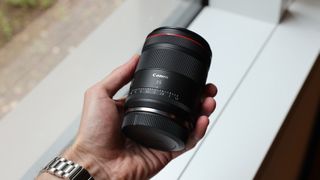
✅ Buy it…
- If you want a lighter and easier-to-carry version of the EF 35mm, at just 555g vs 760g for the EF version.
- If you are keen to step up from the RF 35mm f/1.8 then this lens offers a more professional quality with a wider aperture.
🚫 Don’t buy it…
- If you don’t mind the extra weight of the EF version then it doesn’t look like there is much in image quality to separate the two.
- If you won’t use the custom function controls or aperture ring then you can get the older lens for a lot less money.

